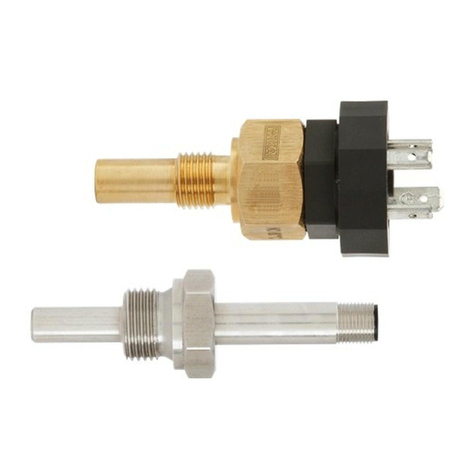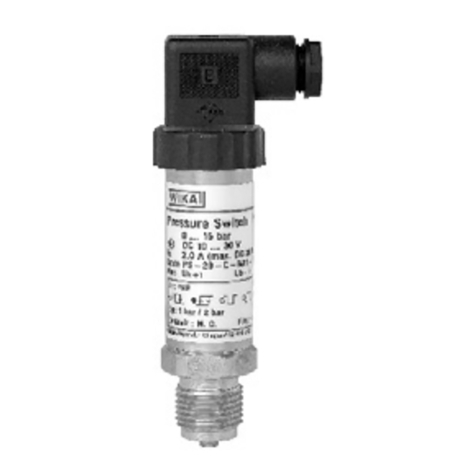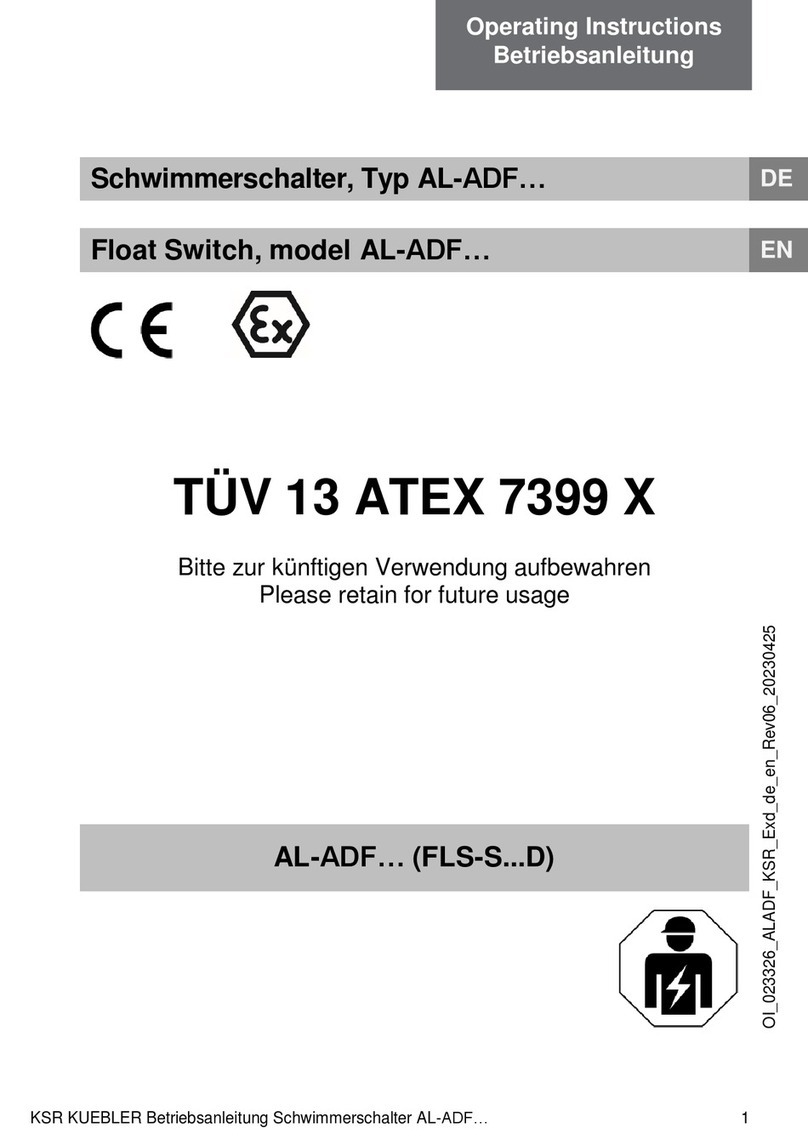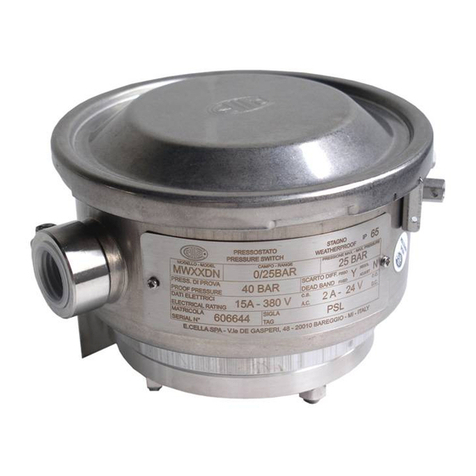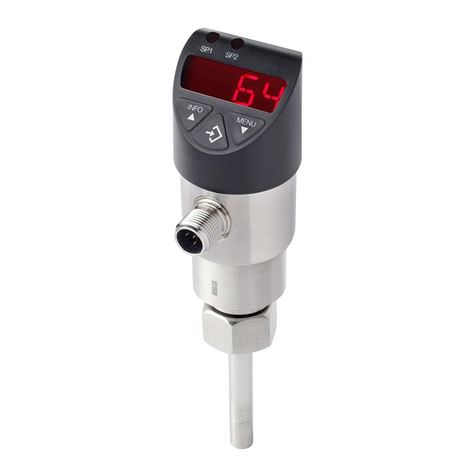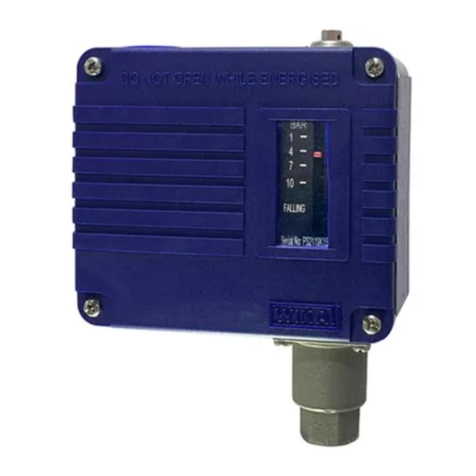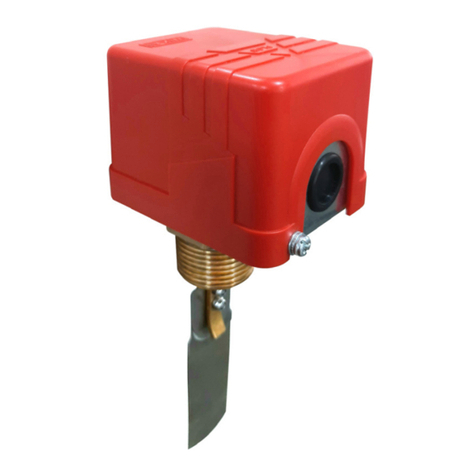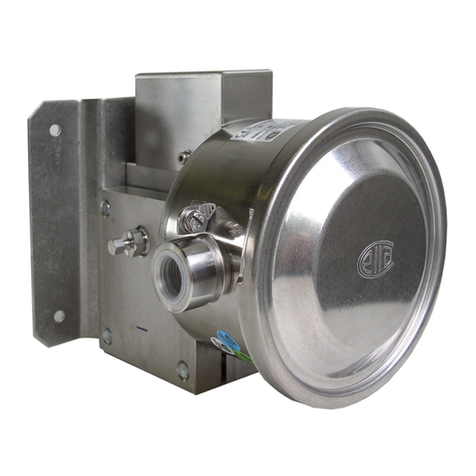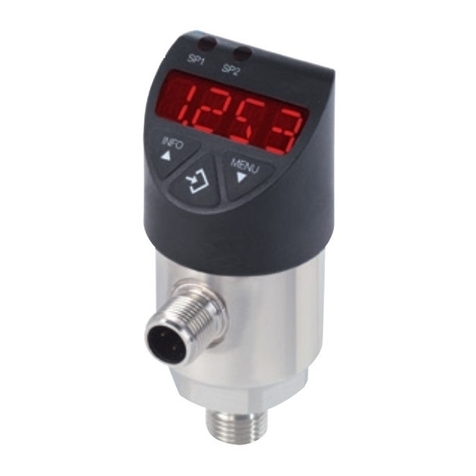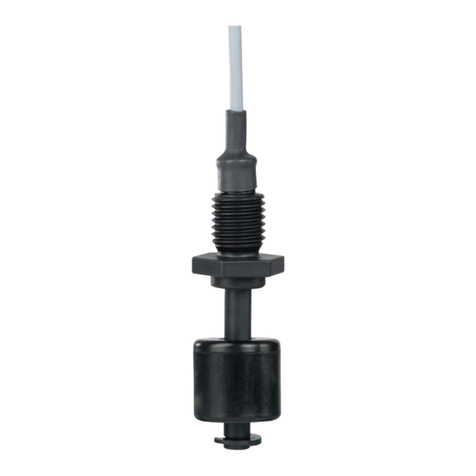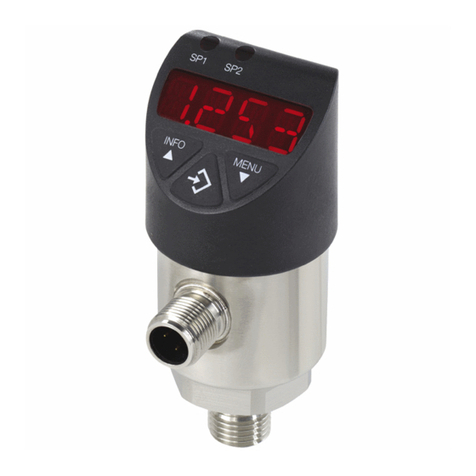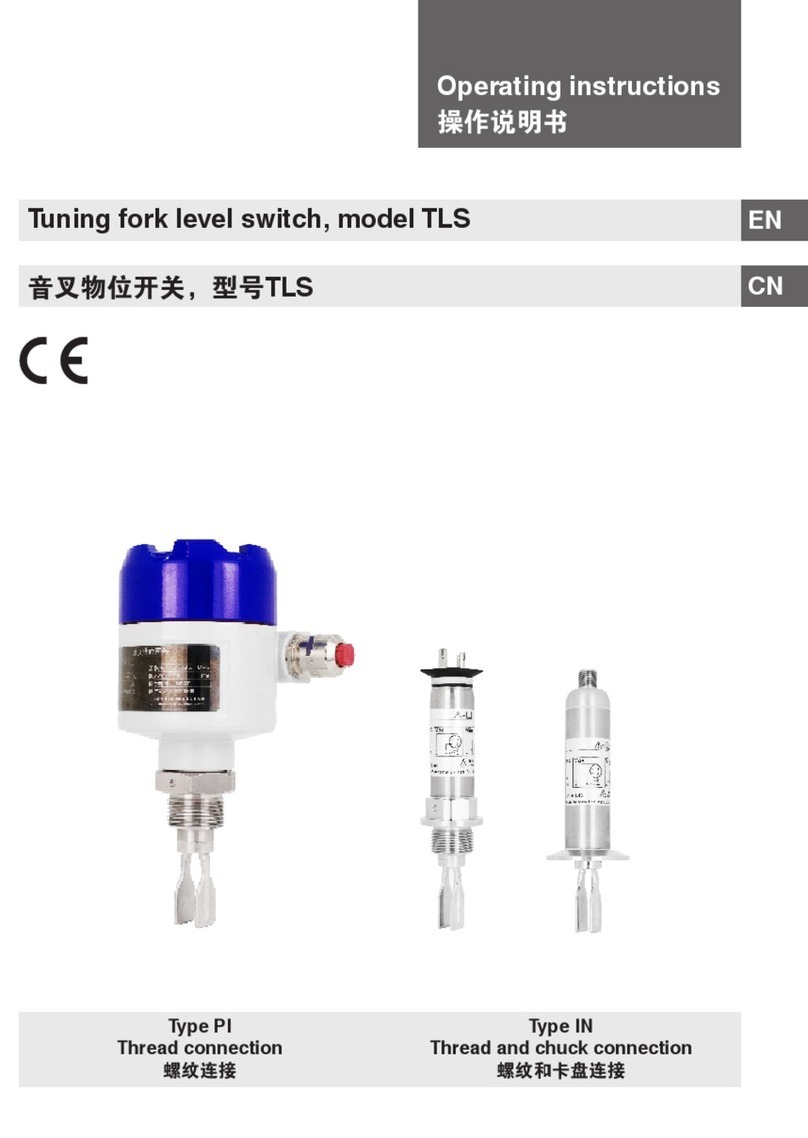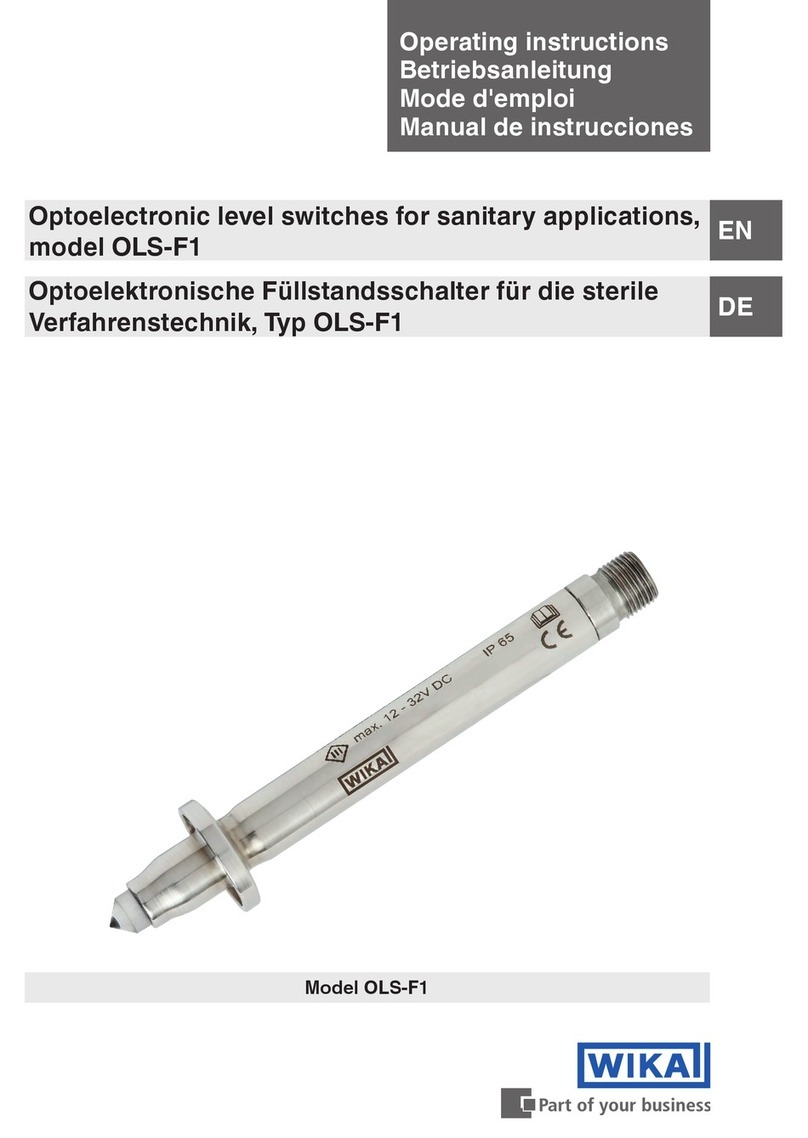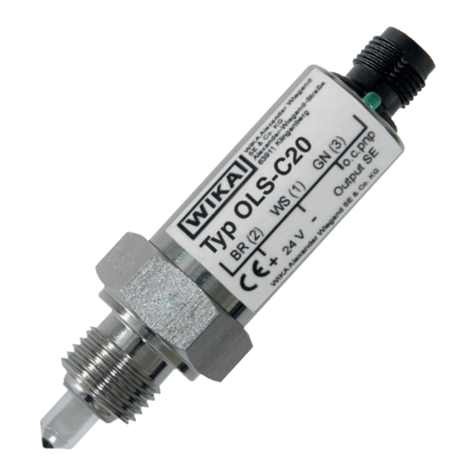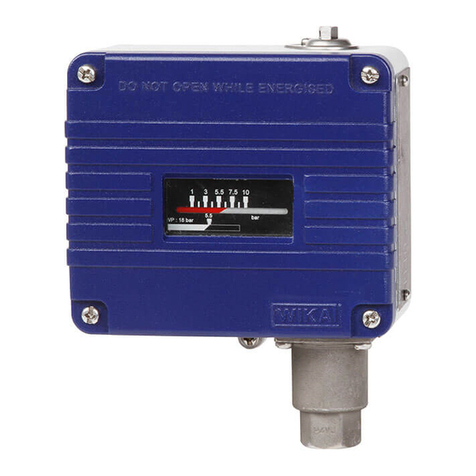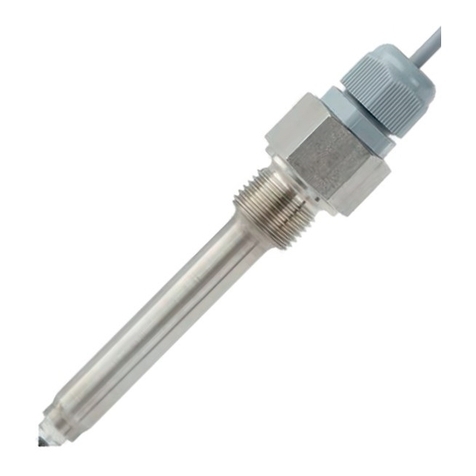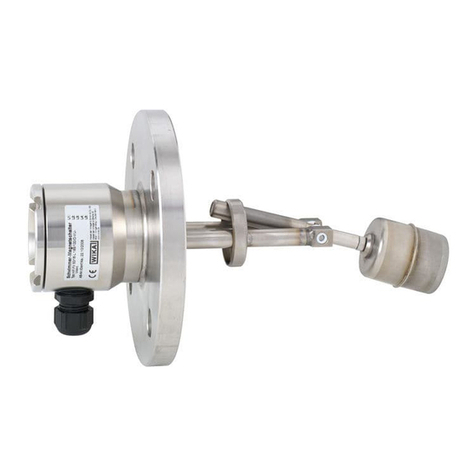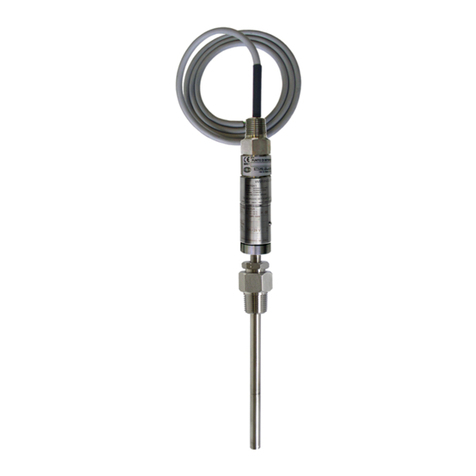
INSTRUCTION MANUAL NI-210WE
Rev. 4 04/20
2 di 6
1 GENERAL NOTES
1.1 FOREWORD
This instrument is suitable for use on air or clean gas free from
vapours that may condensate inside its measuring chambers.
The wrong choice of a series or a model, as well as the incorrect
installation, lead to malfunction and reduce instrument life.
Failure to follow the indications given in this manual can cause
damage to the instrument, the environment and persons.
1.2 ALLOWED OVERRANGE
Pressures exceeding the working range can be occasionally
tolerated provided they remain within the limits stated in the
instrument features (vacuum or proof pressure). Continuous
pressures exceeding the working range can be applied to the
instrument, provided they are clearly stated in the instrument
features. The current and voltage values stated in the technical
specifications and ratings must not be exceeded. Transitory
overranges can have a destructive effect on the switch.
1.3 MECHANICAL VIBRATIONS
Can generally lead to the wearing of some parts of the instrument
or cause spurious action. It is therefore recommended that the
instrument be installed in a place where there are no vibrations.
In cases where this is impossible it is advisable to take measures
to lessen the effects (elastic supports, installation with the pin of
the microswitch positioned at right angles to the vibration plane,
etc.).
1.4 TEMPERATURE
Due to the temperature of both the environment and the process
fluid, the temperature of the instrument could exceed the allowed
limits (normally from -10° to +40°C). Therefore, in case it does,
suitable measures (protection against heat radiation, fluid
separators, cooling coils, heated lockers) must be taken. The
process fluid or its impurities must not in any case solidify inside
the instrument chambers
2 OPERATING PRINCIPLE
The differential pressure acting on a diaphragm, produces a force
directly proportional to the differential pressure. This force is
counteracted by an helical spring whose preload is adjusted
through a proper screw. When the force balance is overcome,
the diaphragm moves and actuates the microswitch through a
rigid tip
The microswitch is of the snap acting type with automatic reset.
When the pressure moves away from the set values, returning
towards the normal values, the switch is reset. The dead band
(difference between the set point value and the reset value) is
fixed.
3 MODEL CODE
See Annex 1
4 IDENTIFICATION PLATE AND MARKINGS
The instrument is fitted with a metal plate bearing all its functional
characteristics and in case of intrinsic safety execution the
markings prescribed by standard IEC/EN 60079-0 (see Fig.1)
Fig. 1 – Nameplate
1 Notified body that issued the type certificate and number of said
certificate.
2 CE marking and identification number of the notified body
responsible for production surveillance.
3 Apparatus classification according to ATEX 2014/34/EU
directive.
4 Type of protection and ambient temperature limits of operation.
The following table gives the relationship between hazardous
areas, Atex Categories and Equipment Protection Level (EPL)
listed on the instrument nameplate
Hazardous area
Categories
according to
2014/34/EU
Directive (ATEX)
EPL
Gas, vapours, fog Zone 0 1G Ga
Gas, vapours, fog Zone 1 2G or 1G Gb or Ga
Gas, vapours, fog Zone 2 3G, 2G or 1G Gc, Gb or Ga
Dust Zone 20 1D Da
Dust Zone 21 2D or 1D Db or Db
Dust Zone 22 3D, 2D or 1D Dc, Db or Da
5 SET POINT REGULATION
The set point can be adjusted by means of a screw (for
adjustment) to snap when the pressure reaches (increasing or
decreasing) the desired value (set point). The instrument is
usually supplied with the switch adjusted at the setting range
value nearest to zero (factory calibration). The instrument is
supplied with a label showing the set point calibration value. With
factory calibration the values are not indicated, as these are
temporary and will be modified with the definitive values. Prior to
installation the instrument must be calibrated and the definitive
calibration values written on the label.
If the instrument has been ordered with a specific calibration,
check the calibration values marked on the relevant label, prior
to installation.
The position of the adjustment screw is given in figure 2.
Fig. 2 - Electrical connections and adjustment screws
1 - Set point calibration screw
2 - Terminal block
Microswitch electrical circuit: State of the contacts at atmospheric
pressure
Designation of the contacts:
C - common
NA - Normally open
NC - Normally closed
The effect that the direction of rotation of the adjustment screw
has is described on the label.
6 SET POIT CALIBRATION
In order to proceed with the calibration and the periodical
functional verification of the instrument a suitable calibration
circuit (Fig. 3) and an adequate pressure source is required.
The calibration circuit used for the calibration of these
instruments must have:
- a big internal volume (5 litres or bigger) in order to reduce the
effect of volumetric variation (and therefore of pressure) caused
by the sensing element of the pressure switch during the snap
action.
- installed in a thermally stable place in order to guarantee
stability to the pressure inside the circuit used for the calibration.
Have to be considered that in a closed circuit with the internal
pressure equal to the atmospheric pressure, the variation of
temperature of 1°C causes in the circuit a pressure variation of
3,4 mbar. The maximum inlet pressure must not exceed the
lesser of overpressure allowed by the pressure switch and the
test gauge.












